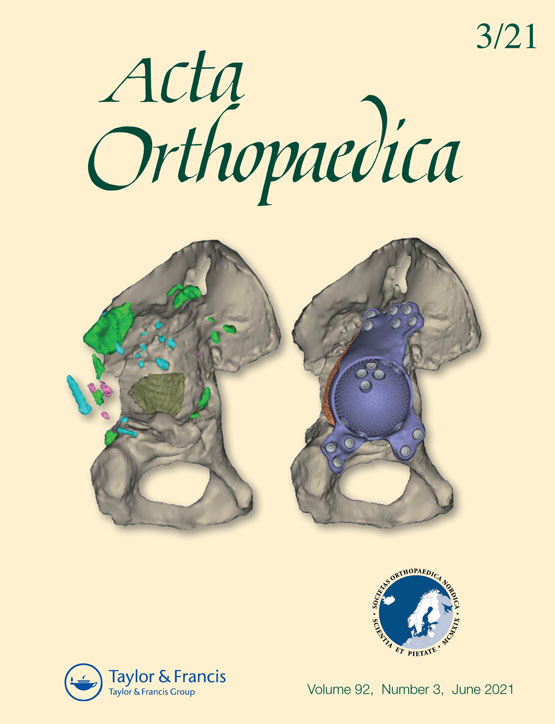Machine learning algorithms trained with pre-hospital acquired history- taking data can accurately differentiate diagnoses in patients with hip complaints
DOI:
https://doi.org/10.1080/17453674.2021.1884408Abstract
Background and purpose — Machine learning (ML) techniques are a form of artificial intelligence able to analyze big data. Analyzing the outcome of (digital) questionnaires, ML might recognize different patterns in answers that might relate to different types of pathology. With this study, we investigated the proof-of-principle of ML-based diagnosis in patients with hip complaints using a digital questionnaire and the Kellgren and Lawrence (KL) osteoarthritis score.
Patients and methods — 548 patients (> 55 years old) scheduled for consultation of hip complaints were asked to participate in this study and fill in an online questionnaire. Our questionnaire consists of 27 questions related to gen- eral history-taking and validated patient-related outcome measures (Oxford Hip Score and a Numeric Rating Scale for pain). 336 fully completed questionnaires were related to their classified diagnosis (either hip osteoarthritis, bursitis or tendinitis, or other pathology). Different AI techniques were used to relate questionnaire outcome and hip diagno- ses. Resulting area under the curve (AUC) and classification accuracy (CA) are reported to identify the best scoring AI model. The accuracy of different ML models was compared using questionnaire outcome with and without radiologic KL scores for degree of osteoarthritis.
Results — The most accurate ML model for diagnosis of patients with hip complaints was the Random Forest model (AUC 82%, 95% CI 0.78–0.86; CA 69%, CI 0.64–0.74) and most accurate analysis with addition of KL scores was with a Support Vector Machine model (AUC 89%, CI 0.86–0.92; CA 83%, CI 0.79–0.87).
Interpretation — Analysis of self-reported online questionnaires related to hip complaints can differentiate between basic hip pathologies. The addition of radiological scores for osteoarthritis further improves these outcomes.
Downloads
Downloads
Additional Files
Published
How to Cite
Issue
Section
License
Copyright (c) 2021 Walter Van Der Weegen , Michiel Siebelt, Dirk Das, Amber Van Den Moosdijk, Tristan Warren, Peter Van Der Putten

This work is licensed under a Creative Commons Attribution-NonCommercial 4.0 International License.







